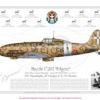When you buy through links on our site, we may earn an affiliate commission.
Search the Community
Showing results for tags '2892'.
-
Recently I received a Linde Werdelin The One from Toro, and considering that I like it a lot and that a proper strap will be pretty expensive and will make it to become a "keeper", I decided to perform a service on a spare 2892-A2 Sea-Gull movement and to install it in the watch to make it running strong and for years. The gen LW The One also comes with that movement (but from ETA) so it can be truly considered a super rep. Its design is peculiar and can be liked or hated. I'm one of those who likes it So, some time ago I purchased a spare 2892 movement from ryaku, a good member of RWG that likes to work on IWC frankens and had some IWC-rep-derived movements around. The Asian 2892-A2 is apparently made from Sea-Gull only and, like all the Sea-Gull movements, is well done and has not much to envy to the Swiss counterpart. The only real advantage of the Swiss one, in terms of functionality, is that they use the etachron hairspring stud, while the Asian has the etachron system only on the regulator arm: Centering the hairspring is therefore facilitated in the ETA version, but if the Asian has been well built, then you don't really need it. I will show here the process, pointing out the attention points, my mistakes (consider it's the 1st service I do on this specific movement) and some tricks that can be useful, also because not always the ETA assembly/oil charts are correct. First step is to start with a completely washed and un-assembled movement. When I disassemble a movement I normally follow the ETA assembly chart in the reverse way, and keep the parts separated in single containers based on the page I'm working on. If the page is particularly full of parts, and/or there are screws that can be confused due to their similar dimensions (yet having a different spare part number) I may use more than one container per page. For example: [/url] Since I don't normally wash the screws, because it's useless, it is good to keep them bound to the rest of the components on which they are used. So I keep always the container with the screws next to their relative washed parts: The paper you see under the components is a lint-free paper. This is very important to avoid the most possible to have little semi-invisible piece of fibers attached to the parts. Even a very small fiber can create many problems if it goes in the wrong place, as I will show later... Another important thing to remember: do NOT close the parts into closed box unless they are FULLY dry. If there is still some humidity on them, they will rust and the movement then can be thrown away... If the day isn't hot enough, I put them back into their containers with the screws and let them dry into the oven at max 50°C (122°F) for 1h or less. Normally I start the reassembly with 3 preliminary steps. 1) I check in the oiling chart which bits need an epilame bath (a treatment to avoid the oil to spread) and apply it. I use the Moebius "Fixodrop" 8941. It is VERY expensive, but you can find small amount on eBay, and 10cc will serve a lot of movement. I immerse in it the parts to be treated and let them dry on a clean and not absorbing surface: 2) I lubricate the reverse gears (only one for this movement) with the appropriate fluid, which is the LubetaV105, the only one that in my view really works with these little complex parts: 3) I oil and put together and assemble in their final destination the balance shock-absorber jewels. It is very important to properly oil these stones, and have them very clean before the oiling. I keep a dedicated microfiber rag (kept in a hermetically closed bag) just to pass the already washed end-stone before the oiling part. I normally use the base of the balance holder tool to work on. With my left hand I keep the stone with the tweezers and with my right hand I use the oiler with Moebius 9010. The drop should cover like 2/3 of the stone diameter. An important consideration: the end-stone has one flat surface and one rounded surface. It is easy to find the flat surface using the light reflection effect. The oil must be placed on the flat surface. So here we go: end-stone oiled and already joined with the pierced stone, ready to be mounted in the balance: And mounted (the main plate IS clean, the "dirt" is just a light effect): This part is also useful to check if the hairspring coils are all similar and properly centered. Not like: Then I just remove again the balance bridge and wheel and put them apart for the moment I'll put them again on the semi assembled movement. A word of attention: the shock absorbed brass springs are VERY fragile. When you deal with them, treat them like if you are having a surgery scalpel in your hand and using it to cut a small hair on your [censored]. Effective image, uh? Once the 3 preliminary steps have been completed, and the LubetaV105 has dried, then we can start following the ETA assembly/oiling charts (remember that they can be downloaded here: http://www.eta.ch/ -> Product -> Downloads - Technical communications (down the page, on the right)). So as usual they start from the assembly of the keyless works. Here partially mounted (missing only the setting lever jumper): Here completed: Now we're going to encounter one of the ETA chart assembly error... In fact, just after the keyless works they show how to assemble the train wheel (except the 1st wheel) and their bridge. BUT... The 1st wheel is kept in place by the barrel bridge. But you can't mount the barrel bridge if the train bridge is already assembled, because the 2nd wheel is just upper the pinion of the 1st wheel and there is no space to insert the jeweled part of the barrel bridge that keeps it in place! So I had to remove again the train bridge and wheels and proceed with the barrel bridge BEFORE again put back in place the 2nd, 3rd and 4th/escapement wheels and their bridge. This is the barrel bridge partially assembled: And fully assembled, with a little mistake. The click spring should stay as indicated and not as I put it (but it went in place by itself when I mounted the plate). This is how it should be: When you mount the bridge, remember to check, in the hole next to mainspring arbor jewel, that the click spring is correctly positioned. It tends to slip below the gear and if you tight the barrel bridge screws in such situation you can make a mess... Another tip here (pic taken from the bay: I forgot to take a pic and therefore I had to search one around): Remember that the barrel and the mainspring should be cleaned and greased too. For the mainspring I use a bit of Moebius 8200 in a folded piece of paper and pass the mainspring through the folded-greased paper. This way the mainspring becomes lightly greasy. Something like this: For the barrel walls, here below indicated by the green lines, I use a tiny amount of braking grease Moebius 8217, 4 spots 90° one from the other. Finally I draw a "X" on the base of the barrel and the cover inside again with Moebius 8200. This way: So finally the barrel bridge and 1st wheel are up: And NOW the rest of the train wheel can be mounted, followed by the pallet fork and its bridge: Remember: 1) the pallet fork pinions are VERY fragile: do NOT tight the screws of its bridge unless you are sure that the pinions are properly seated into their jewel holes. 2) NEVER oil the pallet fork pinion jewels. There shouldn't be anything that increase its friction (and yes, oil add some brake effect with its viscosity) 3) one of the pallet stones instead should be oiled, with a specific product that has a "cushion effect" when the stone hit the escape wheel teeth. I use the Moebius 9415 and, unlike the ETA chart shows, I prefer to apply it on the un-assembled pallet fork, instead to fit the oiler in the main plate hole later on as shown here: Finally up the balance and its bridge/[censored]: Time to test the movement! Always test the movement at this stage. Otherwise you may end up to have it completely assembled and discover a problem only at that point... Resulting into having to re-do all from the beginning. Ok, now I've to say that after the 1st assemblage, when I put it on the timegrapher, I got values that were SO BAD that I thought "WTF have I done here?". The movement arrived in good status but unserviced (as all the movements in our reps) with an amplitude of around 240°. After the cleanup, oil and assembly, it wasn't going over 145° amplitude... And just looking carefully at the movment I couldn't find why. Anyway it was like half past midnight, so I released the mainspring power (to avoid it running that way) disengaging the click spring and went to bed. The day after I approached again the movement. I removed the balance with its bridge, removed the antishock stones and also removed the barrel (one of the option I was wondering about was "Have I installed the mainspring in the wrong/reverse way??", which, by the way, I haven't). I cleaned those parts again, with the ultrasonic machine and some hexane, degreaser and demineralized water, and re-oiled and re-installed them again and... Ok, NOW we're speaking! Most probably a tiny invisible fiber ended up on the hairspring or between the endstone and the pierced stone and that was enough to have those terrible performances. Time to rotate the movement and start assembling the rest. Here the bits necessary to the regulation of time and date quick set are installed next to the keyless works: And here you can see the correct lubrification of the cannon pinion: The minute train bridge is now up: Again, following the ETA charts for the installation of the date-change mechanism, you need to take care of one part. If you are distract you may end up in this situation: So wait to install the part nr. 41 of this page: First put in place the part 37 (date indicator driving wheel), lifting a bit the date wheel, and THEN lock the date wheel with the part 41 and its screw. This is how it should look (there are few scratches on the plates 41 and 40, probably caused by the previous owner when he removed the original IWC DW. Nothing that can create functional problems anyway): Last part is the autowind bridge, which on this movement is a bit more complex than on the standard 2824/2836. The way it looks when assembled is this: Unlike the majority of the movements, the rotor here is kept in place by 3 screws under the autowind bridge, so you can't take away the rotor when the movement is fully assembled (unless you want to remove the rotor from its ball bearing with a special tool). Finally, the complete movement (with also its final crown installed): Hope you enjoyed, or at least found this useful!
-
- 3
-

-
Hi All, Is there any replacement hour/minute wheels, or other solution I can use for making the hands higher off the dial? It's for a watch I'm making. The dial is a little too thick. I'm looking to go 0.5-1.0mm higher if possible. Thanks. =)

